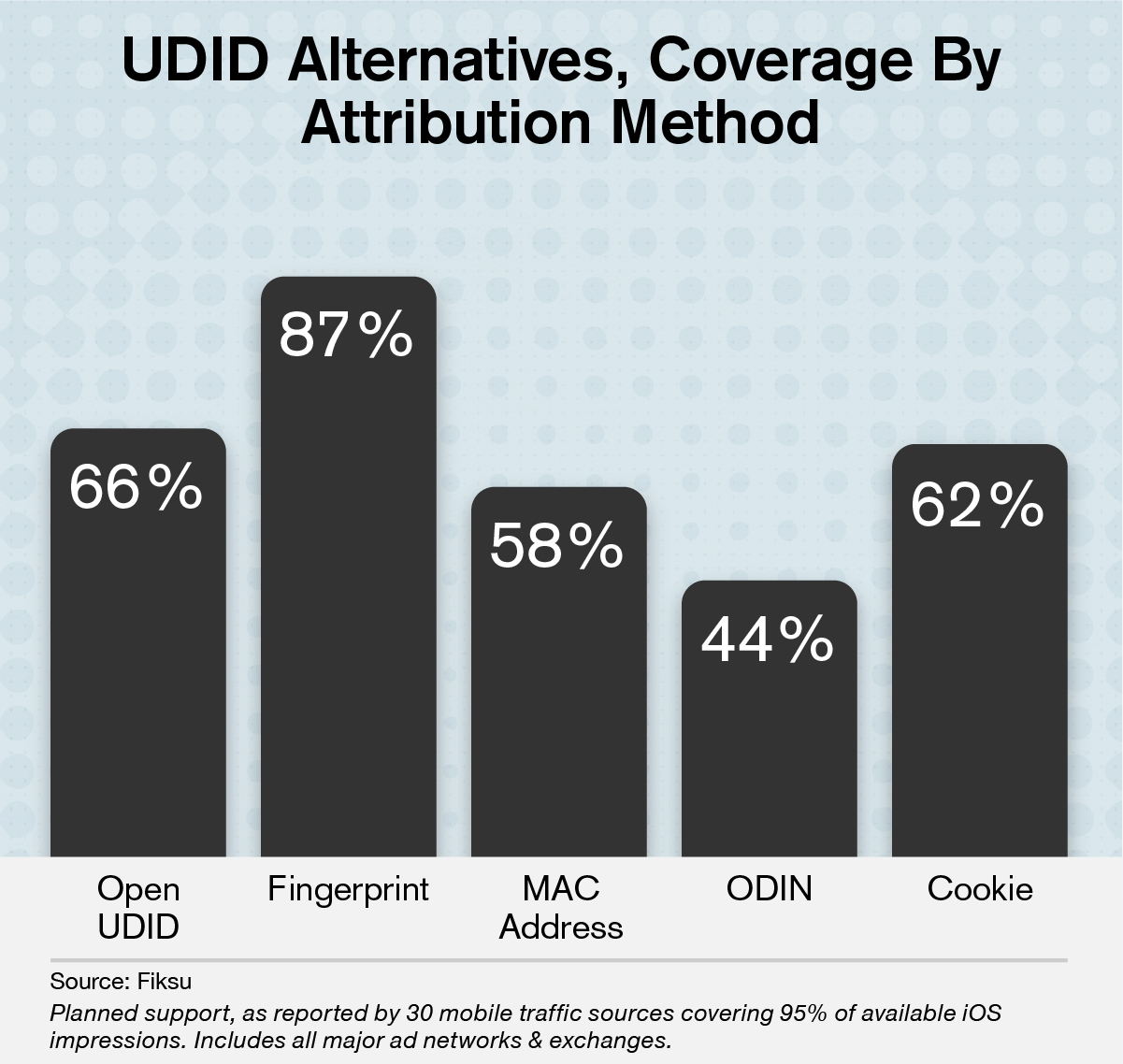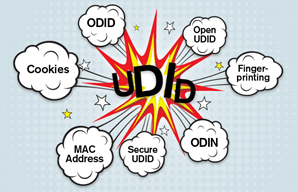Craig Palli is vice president of Client Services & Business Development at Fiksu (@fiksu), which helps brands boost iOS and Android mobile app ranking and secure large volumes of loyal users. You can find him on Twitter @cpalli.
The mobile app industry is in a state of confusion in the wake of Apple’s recent measures to wean developers from the UDID (Unique Device Identifier), a function broadly used for determining the effectiveness of mobile advertising.
In the short term, it seems that notions of an imminent Apple ban on use of UDIDs are premature. However, most in the market have concluded that they need to move toward new methods of marketing attribution for iOS device based advertising. The key for entrepreneurs and mobile app brands is moving to alternatives that will best allow their businesses to thrive.
Understanding The Alternatives
Understanding the alternatives begins with developing an appreciation for the fact that there is no single substitute for the UDID that fully meets the needs of all constituents: advertisers, publishers (those who show ads), ad networks, and consumers. Though some are hoping for Apple to provide a solution, no such plans have been announced. Therefore an entrepreneurial eco-system has responded with an explosion of competing solutions, each with its own advantages and drawbacks.
Some of these include:
- HTML Cookie Tracking: This method has excellent ad attribution and privacy characteristics, but requires a quick redirect on the first app launch. Some feel this detracts from the initial user experience.
- Digital Fingerprinting: This combines anonymous data and statistical techniques to estimate conversions. It’s easy for a developer to implement, but it comes with an error rate that makes it too imprecise for many marketers, especially as it relates to loyal users metrics
- MAC address: Similar in nature to the UDID, this method uses a hardware based unique ID. It is easy for networks to implement but because, like the UDID, it is a universal identifier, many believe Apple will clamp down here as well. Two groups, ODID and ODIN, have proposed variants of this method.
- Paste bin methods: These methods store an ID in a segment of the copy/paste bin. OpenUDID and SecureUDID offer similar benefits to cookie tracking, but some view this approach as a misuse of system infrastructure.
Estimating Switching Costs
Switching is no simple matter. There are significant costs to assess including time to market, roadmap tradeoffs and development resources. Each solution requires code work and testing by app developers, app publishers, ad networks and supply side platforms. Although networks and platforms are announcing support for new methods, it will take time to get publishers on board with new SDKs.
Dealing with Solution Fragmentation
The multitude of choices, combined with the prospect of potentially having to support multiple solutions has become a huge industry headache. As a result, selecting one or even two the aforementioned solutions may seem appealing, but in the long-run this may inhibit growth. Placing a single bet on one technology option may require businesses to start anew if other solutions win out in the market. For some this may be OK. For others the switching costs may be prohibitive.
Consider: Is Google Play Right For You?
Ironically, the functionality for ad attribution on Android is standard, and does a good job of balancing privacy and ad performance monitoring needs. In response to the confusion in iOS, some developers are looking at reallocating more ad spending to Google Play.
An example is app developer iTriage, where the UDID issue has triggered an internal debate. Mike Guinan, Consumer Marketing Manager notes: “The marketing team would like to ride out the UDID until each ad network is finished deploying their unique solution. The development team would like to deprecate the UDID as soon as possible to avoid potential risks. It’s a complicated issue. We may look at shifting our iOS budget to Android if it gets really messy.”
Networks are Key – So What’s Happening?
Obviously, a widely adopted standard is the ideal scenario for the industry. Without one on the horizon, the ad networks are key. Here at Fiksu, we’ve been actively surveying the 35+ ad networks and platform-exchanges we work with to determine their level of support for each standard. Here is our scorecard, which illustrates what percentage of available impressions in the market can be reached via a particular technology. (see graph)
It’s important to note that this is based on planned support, not the traffic actually available today. The scorecard has been evolving continually in recent weeks and we expect further changes.
As you can see, there’s no clear technology winner.

We’ve also observed that a number of networks are starting to hedge their bets by planning support of multiple technologies. Others are pushing one method as their primary solution, but are implementing another as a secondary option. For example some networks are actively implementing MAC address solutions but are planning support of OpenUDID or cookie based options as a migration path.
Many in the market find this lack of a clear standard frustrating. iTriage’s Guinan notes “Many of the ad networks we talked to are planning different responses to UDID deprecation. That makes it difficult for developers and marketers to prepare for the upcoming change – it’s hard to know where to allocate your resources.”
So What Are App Developers to Do?
For now, entrepreneurs and brands are left to navigate this rapidly changing landscape, which means they must remain nimble. I’d recommend these steps:
- Speak to your key networks to determine what technologies they will support. Before committing to a new attribution method, understand the timeframes each network has for updating their publishers. Then develop a transition plan.
- Beware of alarmism. Apps with UDIDs are still being approved, and the bulk of iOS traffic available today supports the UDID. Recent experience shows that the best way to stay within Apple’s published guidelines and avoid issues with approval are to provide disclosure to the user of use of the UDID. Then, make sure that any transmissions of UDIDs are encrypted. Finally, provide a link on your iTunes page to your privacy policy.
- Be prepared to make some tradeoffs. In the short term, it might be harder to get ad traffic due to technology mismatches. You may have to monitor your advertising partners and be prepared to adapt quickly.
- Select the mix of alternatives that right for you. For businesses looking to maximize growth and value the choice is likely to support several or even all alternatives.
- Update code and implement traffic partner SDKs
- Test advertising buys and determine which attribution methods yield the best results by advertising source and attribution method.
- Consider Outsourcing. If all of this is too much, you can always find a vendor that will manage the complexity of the different interfaces on your behalf.
Marketing attribution methods in mobile are rapidly evolving. While the door may not be closing as quickly on UDIDs as some thought, it’s clear the mobile industry has accelerated and expanded efforts to replace it. Ultimately, this will result in better protection of consumer privacy. However, without a standard solution in sight, the world has become more chaotic for mobile marketers. Success in this environment will depend on closely monitoring the trends in the market, being open to multiple technology solutions, and staying nimble. Ultimately those who stay ahead of the coming changes will thrive.
